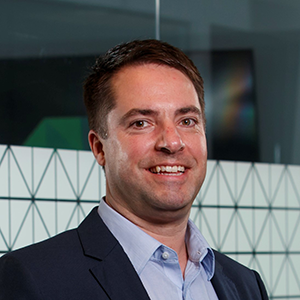Q1. You were appointed to a new role at Cisco relatively recently, but you've been with the company for a long time. What is your vision for Cisco's security business? Where do you see the biggest opportunities for the company to make a difference in the space?
I started a company called IronPort, which was acquired by Cisco in 2007. As Security VP/GM, I worked at Cisco for five years before leaving in 2011 and starting a new company called Bracket Computing. In 2018, Bracket was acquired by VMware, where I was a Security SVP/GM for five years. But now I’m back. I came back to Cisco for a reason, and I’m super excited to be here. We have a huge opportunity in front of us.
For decades, the security industry has been built around the idea that once a new security problem emerges, there’s a cluster of new companies that pop up to solve that problem.
In an ecosystem of point solutions, the burden falls on the customer. They must ingest all these point solutions and just because a solution is marketed as “end-to-end,” doesn’t mean it is.
Customers are stuck with a bunch of products that provide mediocre security. No one wants mediocre security. If you went to your dentist expecting a filling, and instead, they told you that they have a special on heart pacemakers, you wouldn’t want that. The opportunity for Cisco in security is our approach with the Cisco Security Cloud. The industry is moving toward a platform approach. One where you can look across multiple domains and gather unique telemetry and there are very few, if any, companies that have the breadth that Cisco does. Our Cisco Security Cloud provides our customers the platform to solve this problem.
Q2. What were some of the main takeaways for enterprise organizations from Cisco's latest Cybersecurity Readiness Index? What, if anything, was surprising or unexpected in the results?
The Cybersecurity Readiness Index highlights an alarming cybersecurity readiness gap, which will only widen if global businesses and security leaders don’t pivot quickly. Only 15% of organizations are considered “Mature” and ready to defend themselves against a threat. We found that shockingly more than half (55%) of companies globally fall into the Beginner (8%) or Formative (47%) stages – meaning they are performing below average on cybersecurity readiness. However, companies are taking action; 86% of respondents said their organizations plan to increase their cybersecurity budget by at least 10% over the next 12 months.
Readiness is critical - 82% of respondents said they expect a cybersecurity incident to disrupt their business in the next 12 to 24 months, and the cost of being unprepared can be substantial. A majority of respondents said they had a cybersecurity incident in the last 12 months, which cost at least $500,000 for 41% of organizations affected. Closing the readiness gap must become a global imperative and a top priority for business leaders. With the consequences of cyberattacks so clear, readiness must be a priority for all organizations to anticipate what is coming down the road so they can bounce back faster when a threat becomes real.
Q3. What specific initiatives or technologies is Cisco Talos planning to showcase at Black Hat USA 2023?
Our threat researchers are always looking at the bleeding edge of what threat actors are doing, how they are getting past our defenses, and that feeds into how we can innovate to stop them. We’ve got some great research coming out over the next few months on mercenary hacking, kernel exploitation, as well as some interesting work our teams continue to do in Ukraine, particularly with electrical substations.
One of the things we've seen adversaries do, notably the more sophisticated groups, is move lower on the stack. The places we've seen this most recently are in the commercial spyware space and driver abuse. By attacking drivers, adversaries can get closer to the kernel and potentially evade traditional detection capabilities. In the commercial spyware space, we've seen that those with the means can compromise smartphones with alarming ease. We recently published a deep analysis of one of these commercial spyware infection chains, PREDATOR, as well as uncovered a toolkit designed to facilitate driver abuse.
Beyond these spaces we continue to do incredible work in Ukraine and most recently have been working extensively on protecting electrical substations. We have quite a few security researchers presenting in the booth. [Attendees] can come by and hear from vulnerability discoverers, malware reverse engineers, detection content generators, etc.








